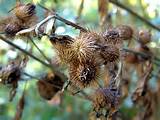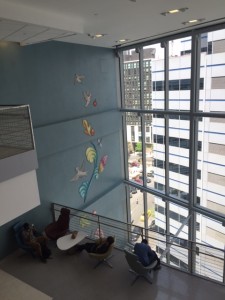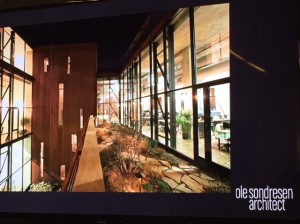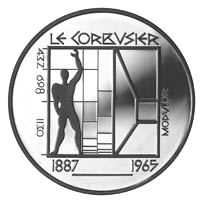Bio-synergistic Design; a name for an opportunity.
“What’s in a name? That which we call a rose by any other name would smell as sweet.” An oft-quoted phrase from Shakespeare’s Romeo and Juliet, but in a fast world of near-instant communications, many a concept has been poorly defined in a title, and because of this misstep, failed to reach its anticipated potential. My brain hears a name and conjures clear pictures relationships, colors and attributes. I have spent some time lately thinking about labels, triggered by a recent and growing interest in natural influences in architecture (pun intended).
Last week I attended a wonderful presentation on Biophilia,
hosted by Urban Green Council in NYC. The evening included some networking, basics on biophilic design as defined by Terrapin Bright Green in their “14 Patterns of Biophilia” publication, and case studies of some gorgeous buildings that included aspects of nature, references of nature or spaces eliciting the scope of nature.
Some of the presentation included defining a few of the “bio” terms in modern design work. I will lay these out for you below, as it is important as background info and inspiring to see how often we are not only allowing nature to inform us (finally) but how often we seek those connections actively to inform our work as architects, engineers, product designer and business owners.
Quick summaries of some of the individual “bio” disciplines:
Biomimicry – using our innovative spirit to mimic nature’s
successes. This means doing things such as adding nubs on wind turbine blades to ease passage through air and reduce drag, just like the nubs on a whale’s fin. Understanding that burrs stick to things, so, voila: Velcro. These use totally different materials and applications, but involve a transfer of principles.
Bio-remediation – using flora or fauna to solve toxic issues. For example, some flowers will uptake lead from the soil, reducing the lead content in the soil. Oysters are another excellent example and are being farmed specifically in some places to improve water quality and clarity.
Biophilia – referencing nature in several different ways to create connection between humans and nature.
There are three categories defined by Terrapin Bright Green: Nature in the Space (plants, animals, water), Nature of the Space (shelter, view, etc.) and Natural Analogues (patterns or visuals reflecting nature). Check out “The 14 Patterns of Biophilia” available free at Terrapin Bright Green’s website. The term “biophilia” literally means “love of life or living systems” and was first known in E.O. Wilson’s book, Biophilia, published in 1984
Bio-utilization – using nature’s systems to create/support higher performing systems. The paramount example is green infrastructure practices, such as vegetative roofs and pervious paving. Here is a link to excellent information on successful Green Infrastructure work in Syracuse. Created reefs also apply here as they mimic the natural soft barriers that help to mitigate storm surge damage.
Terrapin Bright Green used the term “bio-inspired” as an umbrella term for all of these concepts. I’ve been in a mental funk ever since I heard this. I, with absolute respect to TerrapinBG, don’t feel this term has the right connotation to indicate the true power of the bio-realm in design. The term “bio-inspired” means to me that the architecture is being shaped or influenced by the natural references and inputs and inclusion. But I saw in the case studies presented that nature was also being influenced and shaped by the built form. In fact, the inclusion of nature does not only celebrate nature, but manages to elevate the beauty and importance of the
construction and architecture, and bring it into more prominent focus. Most basically, they provide frames of view for each other. In a deeper sense, they inform the choices by the intelligent interplay off of their respective existing attributes. It’s like a good cheese together with an appropriate wine – neither stays the same and both are bolstered by the pairing. Or as in a good marriage – each partner is reflected in the actions and thoughts of the other and even the struggles that shift the balance can reveal strength and beauty in the connection. So we need a term that indicates the symbiotic relationship of the pairing.
I’ve been playing with several labels to come to one that may connote these synergies, because I am worried that by using the term bio-inspired we may miss out on the core benefits of including nature in our design process. In fact, the process itself is better when inspired by natural approaches and allowing organic development of goals. We need to understand the experiential design, the sculptural, illustrative design AND the functional design aspects in weaving nature and built form together if we will excel. Not just bring nature in, but design with it. Not just design a building but let the forms inform us as to what natural patterns and approaches will succeed.
Bio-inspired feels too one-sided to me. I really like bio-interplay, but a couple of serious folks told me this is too light a term and does not reflect the importance of the disciplines included. Bio-interdependence is probably the closest in definition to what I wish to illuminate, but is unwieldy and pedantic. We also can use bio-connection (seems like an on-line match site), bio-fusion (maybe to apply to food inspirations?) or bio-informed…several of my cohorts have also petitioned that “bio” is overused, but I can’t seem to get past that. Nature or eco or green are all terms that would certainly undersell.
The term that resonates with me is bio-synergy. Synergy means “the interaction of elements that when combined produce a total effect that is greater than the sum of the individual elements, contributions, etc.” (dictionary.com) it also means “the cooperative action or two or more muscles or nerves, or the like”. This is just about perfect to encompass our growing understanding of the interactions between natural and build environments. It goes a long way to clarifying that it is not the overlay of one onto the other, but the awareness and active design with our complete environment that will resonate in our improved health, function, joy, and resource use. Reciprocity is a must. Bio-synergistic design practices include all facets of working with nature, including those listed above. It will also flex and evolve to include more eastern design sensibilities, of which I know little, such as Feng Shui,
that build upon compass points and water flow to inform occupant health, happiness and future prosperity. We can also include “grown” building materials as that industry gains ground, like the newest in self-repairing concrete being developed in the Netherlands. Here is a recent news piece on this amazing innovation. We can and must include any design process or result that weaves nature and built forms together for greater mutual success.
What drove me to find this umbrella label, bio-synergy, is my realization that I cannot study just one piece of this incredibly powerful nature-in-design puzzle. I have always been pulled to include earth, air, fire, and water in my life and in the spaces I create. I am fascinated with the Fibonacci sequence and the Golden Ratio and the modular man, each mathematically striving to understand nature’s influences.
Designing with nature exemplifies what I have always wanted the profession of architecture to be: a seeking of best practices, an understanding that it is not the building…and nature, but the buildings in nature and nature in the buildings. These are inseparable. Our environment is all of it, what is created by us and what is gifted to us, and we are stronger and better when we work as the whole and work toward bio-synergistic goals. This is one of the many keys to improving our environment. For me, the emerging and solidifying respect for nature and need to learn from her is exciting and powerful and healing all at once.
Now, we just need a logo!
1 Like this post (no login required)





